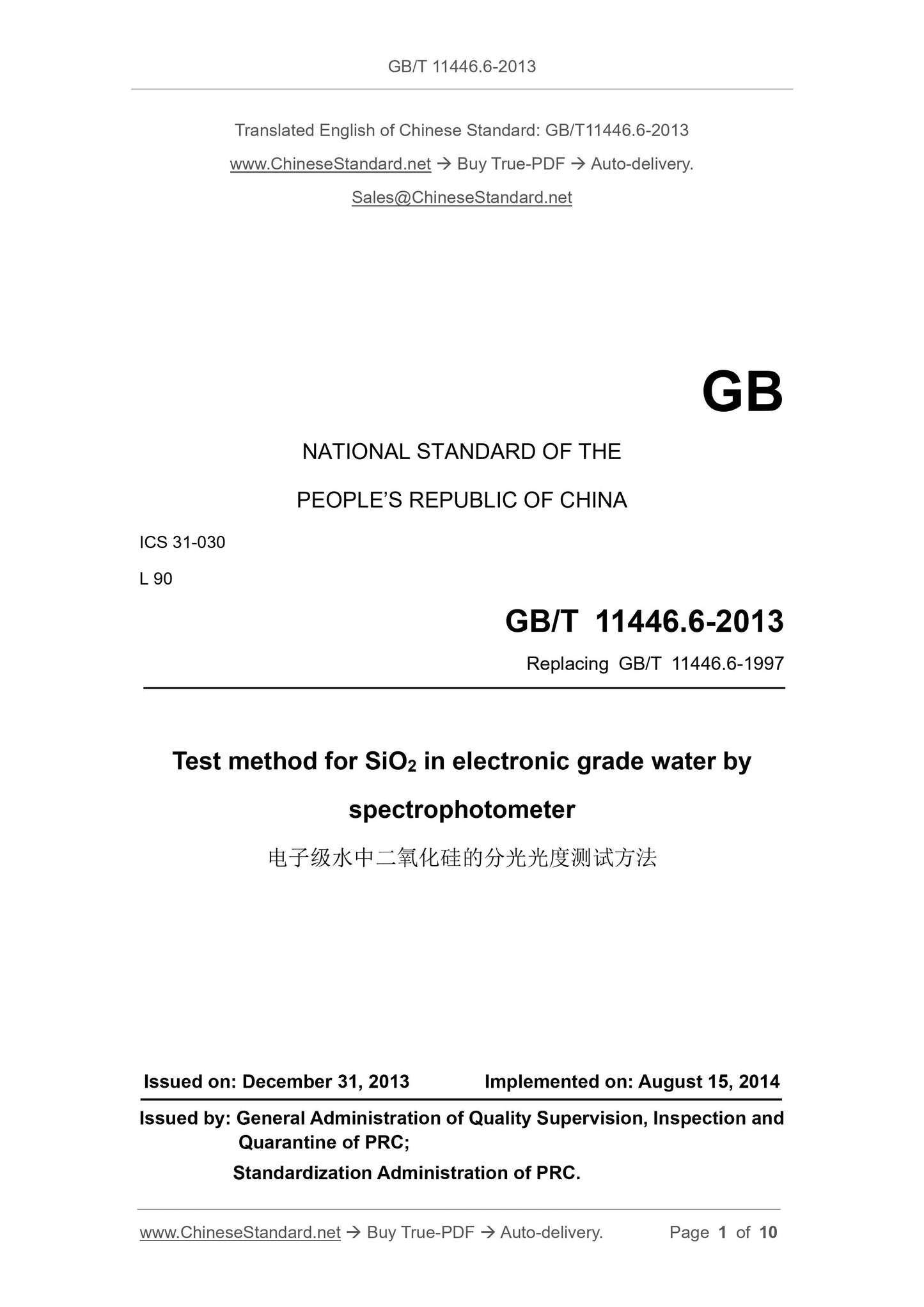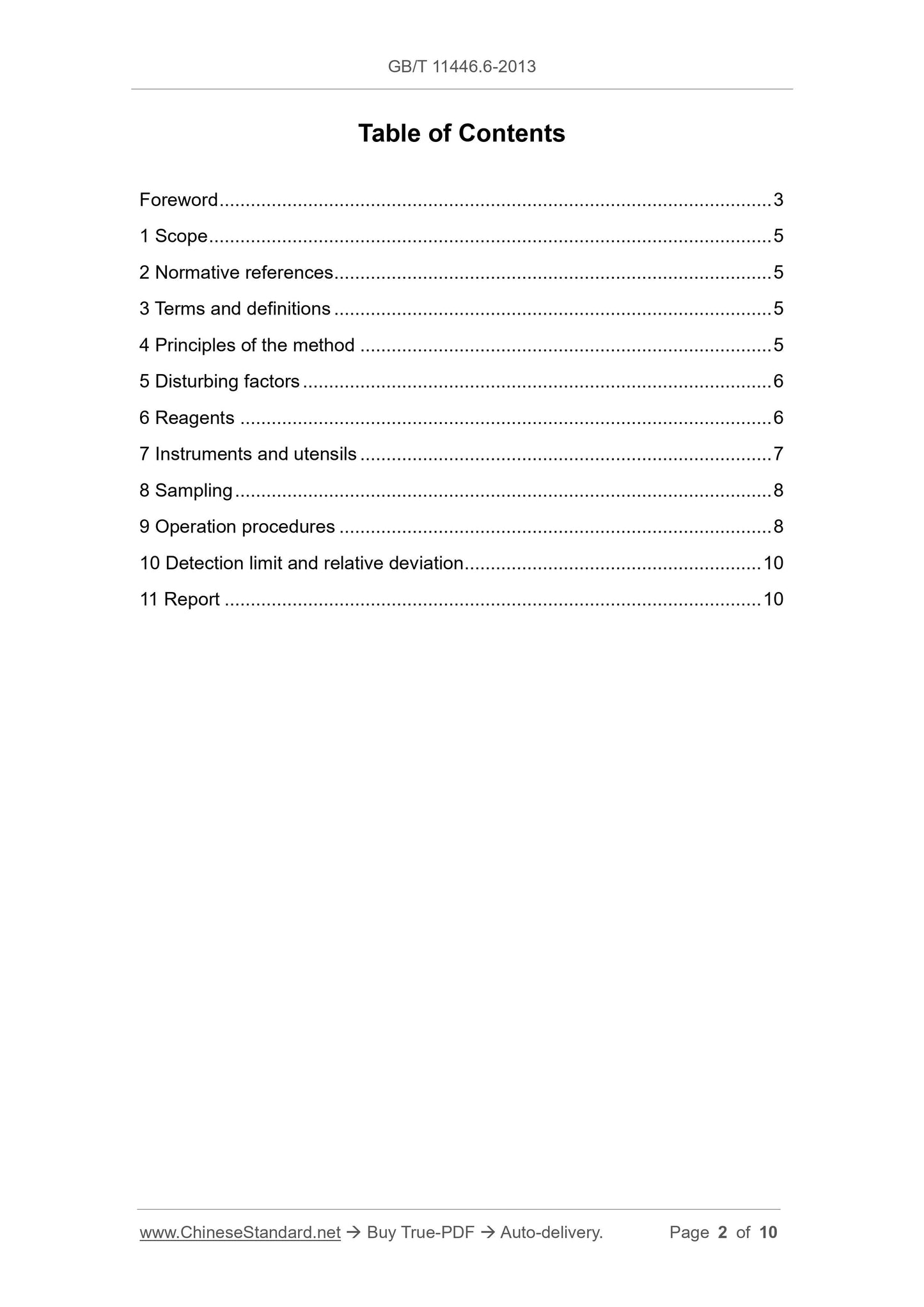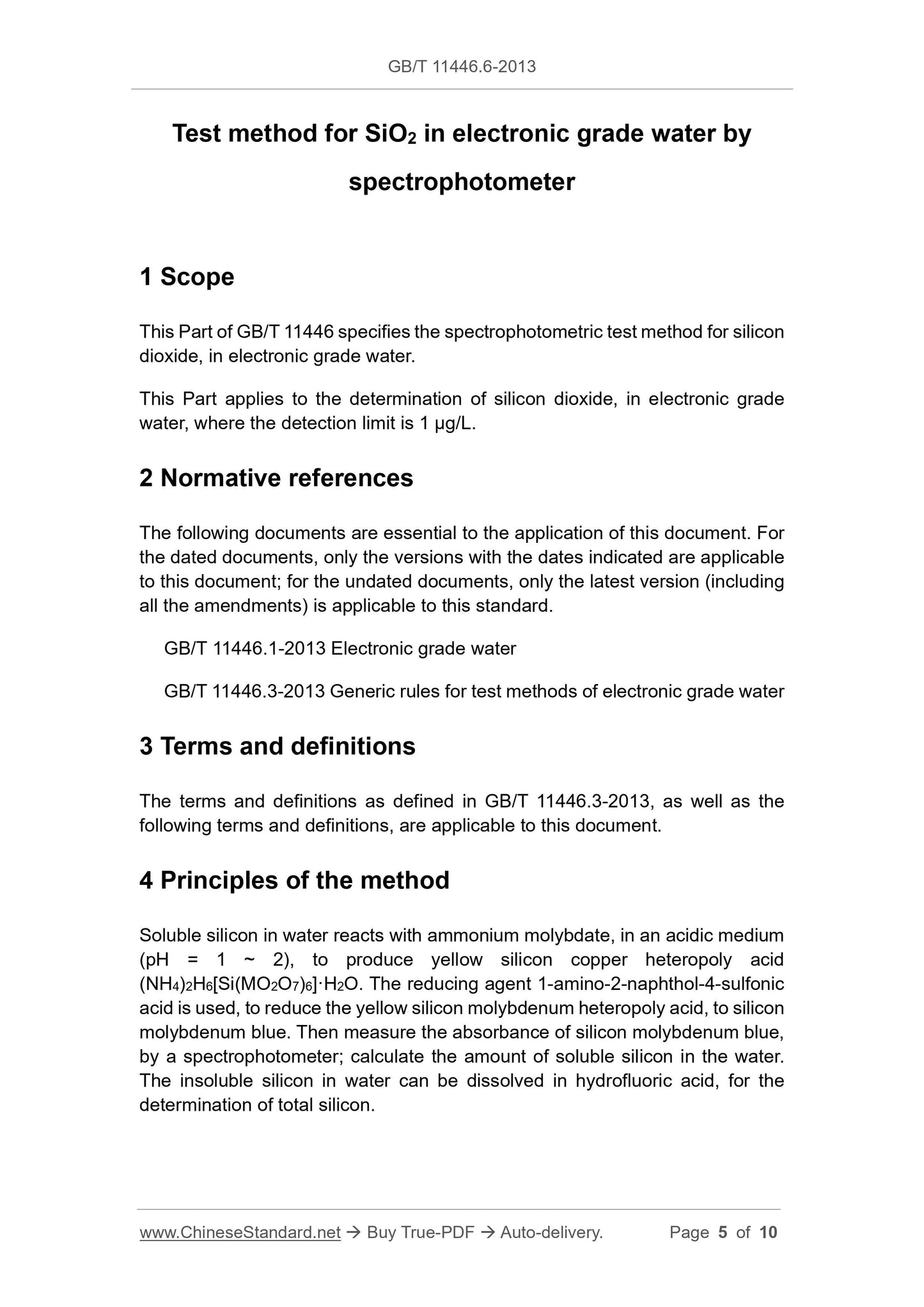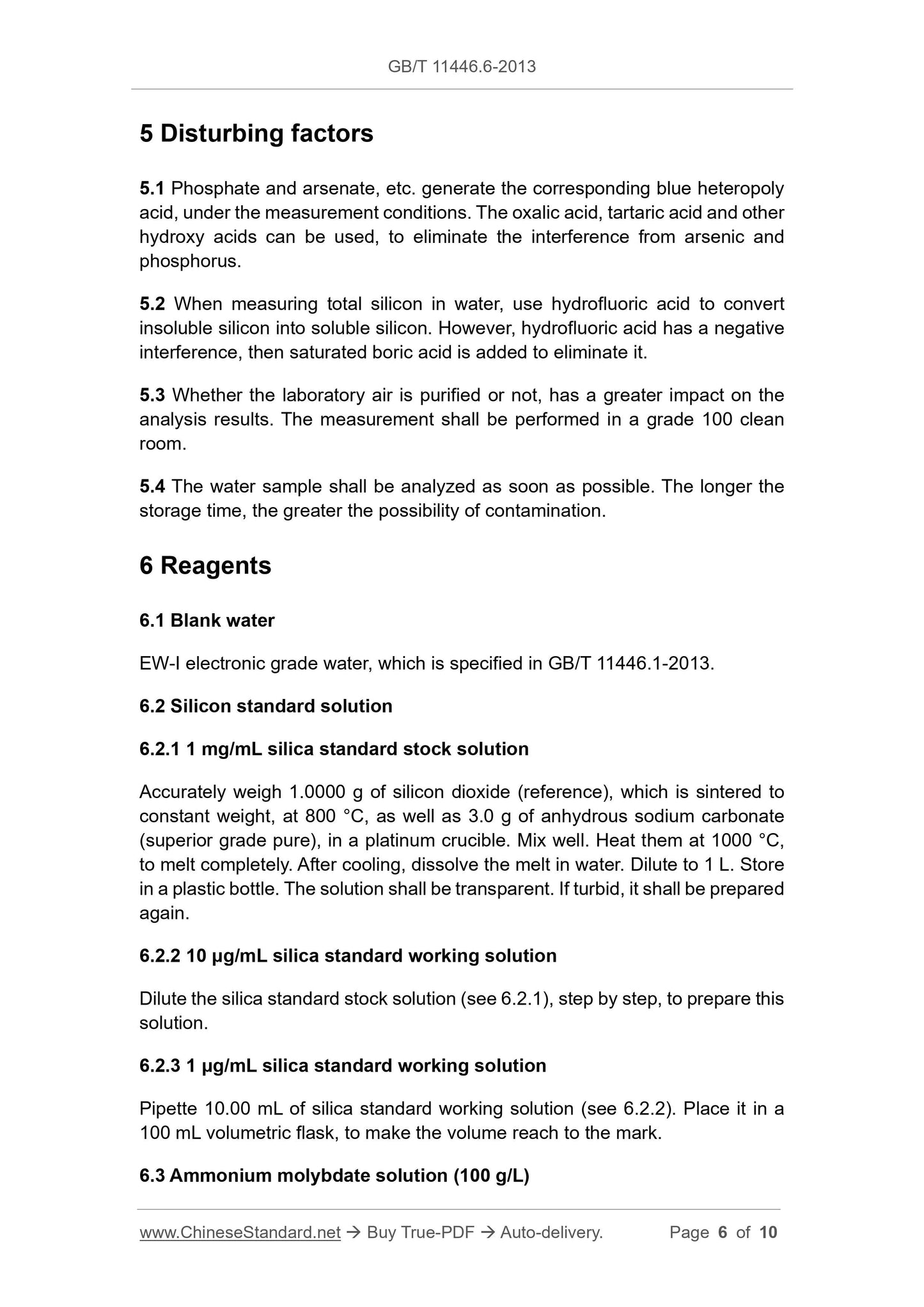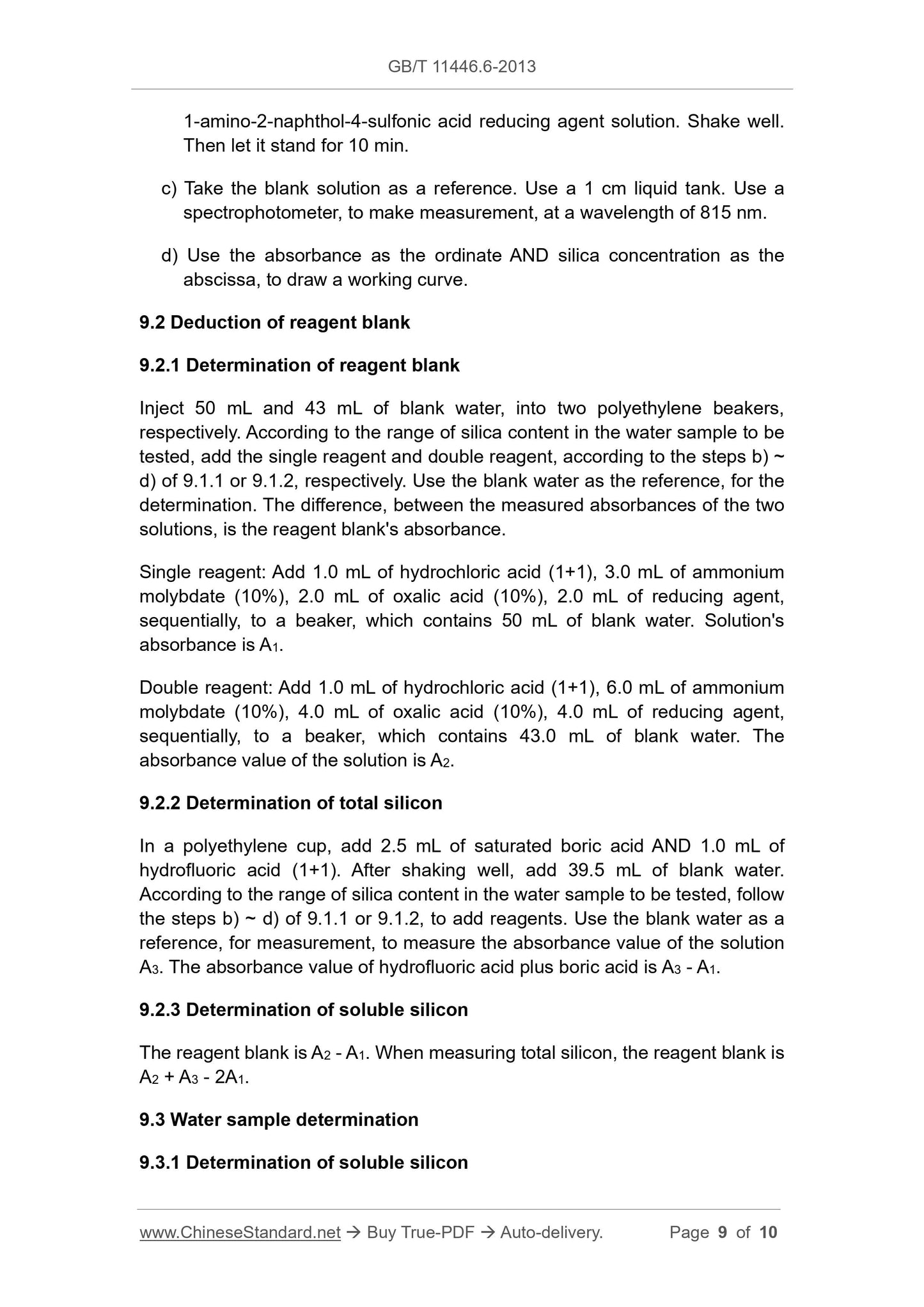1
/
of
5
www.ChineseStandard.us -- Field Test Asia Pte. Ltd.
GB/T 11446.6-2013 English PDF (GB/T11446.6-2013)
GB/T 11446.6-2013 English PDF (GB/T11446.6-2013)
Regular price
$120.00
Regular price
Sale price
$120.00
Unit price
/
per
Shipping calculated at checkout.
Couldn't load pickup availability
GB/T 11446.6-2013: Test method for SiO2 in electronic grade water by spectrophotometer
Delivery: 9 seconds. Download (and Email) true-PDF + Invoice.Get Quotation: Click GB/T 11446.6-2013 (Self-service in 1-minute)
Newer / historical versions: GB/T 11446.6-2013
Preview True-PDF
Scope
This Part of GB/T 11446 specifies the spectrophotometric test method for silicondioxide, in electronic grade water.
This Part applies to the determination of silicon dioxide, in electronic grade
water, where the detection limit is 1 μg/L.
Basic Data
| Standard ID | GB/T 11446.6-2013 (GB/T11446.6-2013) |
| Description (Translated English) | Test method for SiO2 in electronic grade water by spectrophotometer |
| Sector / Industry | National Standard (Recommended) |
| Classification of Chinese Standard | L90 |
| Classification of International Standard | 31.030 |
| Word Count Estimation | 7,798 |
| Older Standard (superseded by this standard) | GB/T 11446.6-1997 |
| Quoted Standard | GB/T 11446.1-2013; GB/T 11446.3-2013 |
| Regulation (derived from) | National Standards Bulletin 2013 No. 27 |
| Issuing agency(ies) | General Administration of Quality Supervision, Inspection and Quarantine of the People's Republic of China, Standardization Administration of the People's Republic of China |
| Summary | This standard specifies the spectrophotometric method of electronic grade water testing silica. This standard applies to the determination of the electronic grade silicon dioxide in water, where the detection limit is 1��g/L. |
Share
